An ideal gas undergoes four different thermodynamic processes from A to B represented by four different paths I, II, III and IV as depicted in the adjoining P - V diagram. Comment on the change in internal energy of the gas.
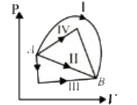
same in I and n but not in III and IV
same in III and IV but not in I and II
same in I, II and III but not in IV
same in all the four cases.
The correct Answer is:D
Internal energy of a system is path independent, it depends only on the final and initial points.lt is evident from the figure that all the four paths have same final and initial points.
Change in internal energy is same for all the four paths.
Topper's Solved these Questions
Similar Questions
The figure here five paths traversed by a gas on a p-V diagram .Rank the paths according to the change in internal energy of the gas , greatest first .
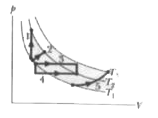
View SolutionV-T graph of a process of monoatomic ideal gas is shown in figure.
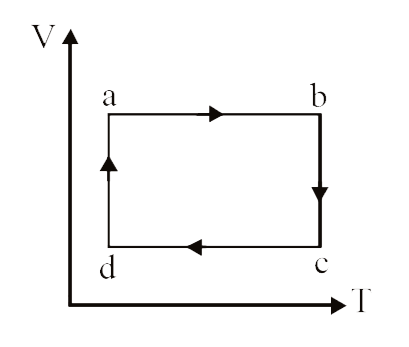
Change in internal energy of the gas is zero in process(s)-
View Solution
Knowledge Check
1 mol of an ideal gas undergoes different thermodynamical process in P−V digram given below :

If temperature at point C is TK then :ATemperature at point A is TK.BTemperature at point A is 2TK.CTemperature at point B is TK.DTemperature at point B is 2TK.The given P - V diagram is showing an ideal gas undergoing a change of state different paths I, II, III and IV that lead to the same change of state, then change in internal energy is
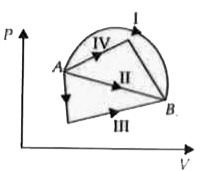 Amaximum along path 1Bmaximum and same along paths III and IVCminimum along path IIDsame in all the four cases
Amaximum along path 1Bmaximum and same along paths III and IVCminimum along path IIDsame in all the four casesFigure shows the p−V diagram of an ideal gas undergoing a change of state from A to B. Four different parts I, II, III and IV as shown in the figure may lead to the same change of state. ltBrgt
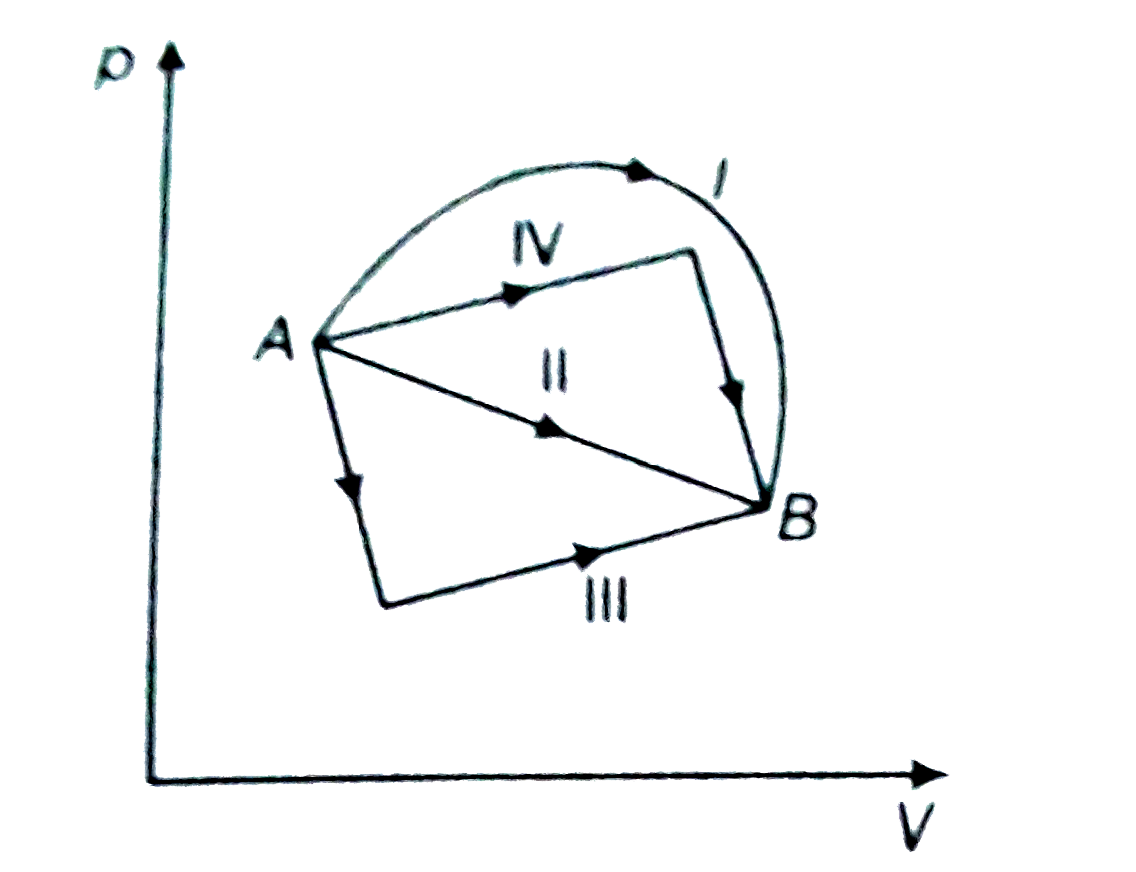 AChange in internal energy is same in IV and III cases, but not in I and IIBChange in internal energy is same in all the four casesCWork done is maximum in case IDWork done in minimum in case II
AChange in internal energy is same in IV and III cases, but not in I and IIBChange in internal energy is same in all the four casesCWork done is maximum in case IDWork done in minimum in case II
An ideal gas undergoes a series of processes represented bya→B→C→D on the P-V diagram. Answer the following questions.
(a) Is the internal energy of the gas at B and D equal?
(b) Find work done by the gas in the process A rarr B rarr C rarr D.
(c) Is it right to say that point B and D lie on an isotherm?
(d) Find the ratio of internal energy of the gas in state A to that in state D.
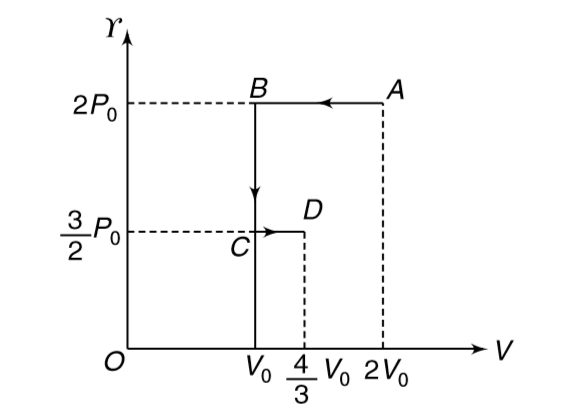
View SolutionAn ideal gas undergoes a thermodynamic process in which internal energy of the gas depends on pressure of the gas as U= ap!, where a is a positive constant. Assuming gas to be monoatomic, the molar heat capacity of the gas for given process will be
View SolutionIn the adjoined figure the indicator diagram of an ideal thermodynamic gas system is represented. If the change in internal energy along the path acb is 10 calorie then change in internal energy along the path bda will be

View SolutionAn ideal gas is taken from state A to state B following three different paths as shown in P-V diagram. Which one of the following is true ?
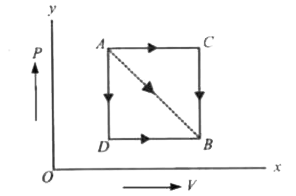
View Solution(figure). Shows the P−V diagram of an ideal gas undergoing a change of state from A to B. Four different process I, II, III, IV, as shown in (figure) may lead to the same change of state.
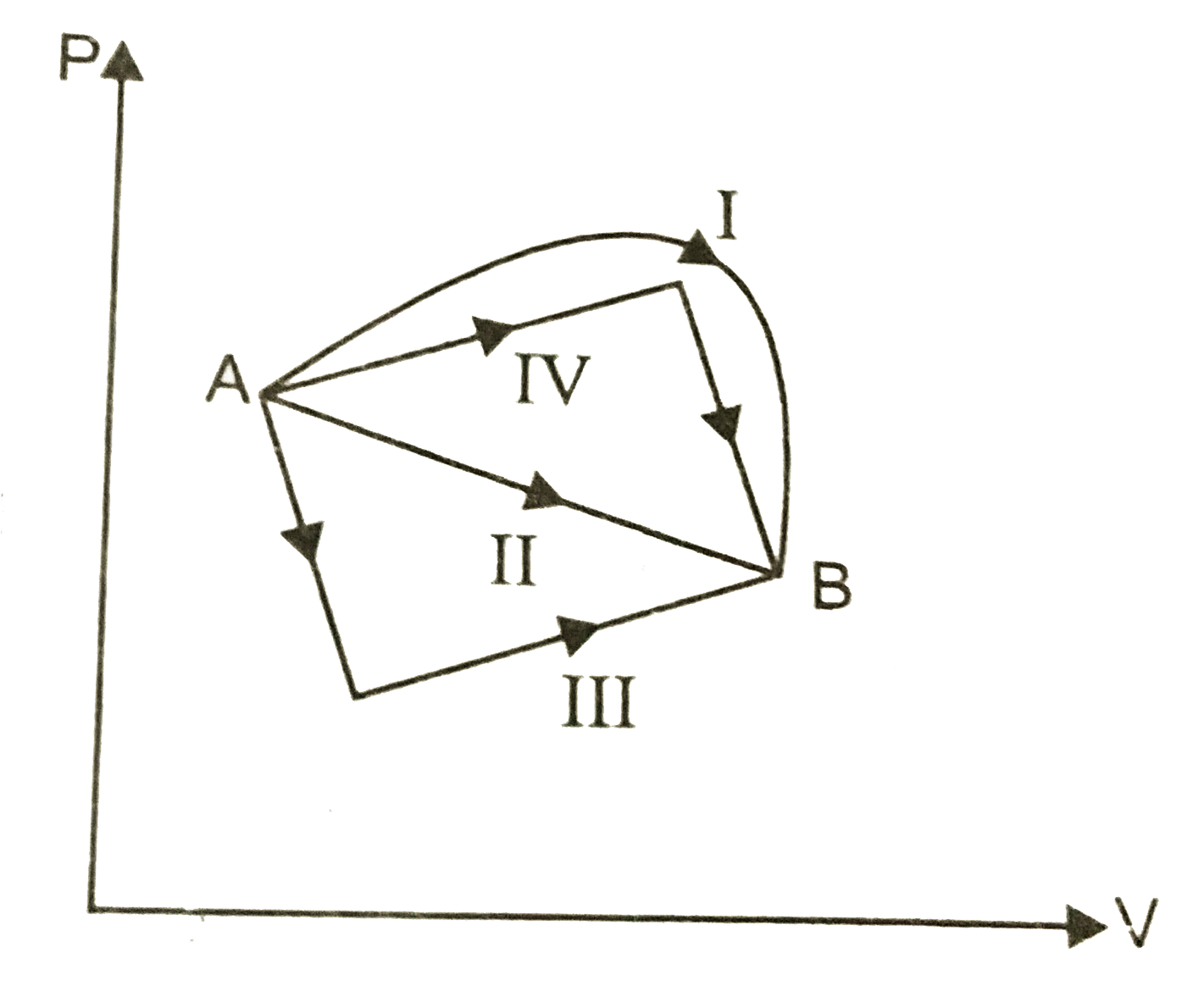
View Solution
